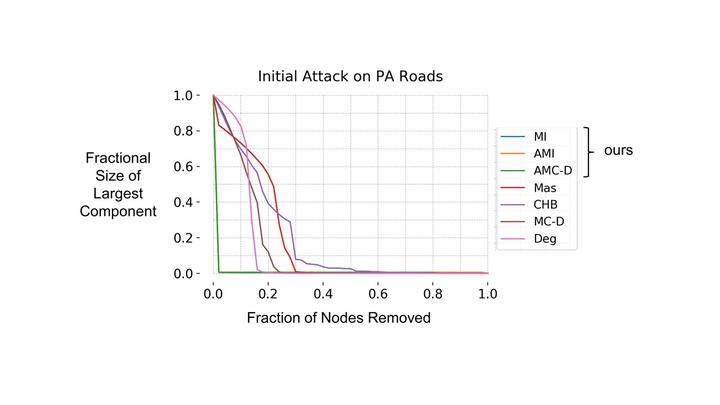Measuring Node Contribution to Community Structure with Modularity Vitality
 Fragmentation of the PA Road Network. Our measures overlap, clearly fragmenting the network fastest.
Fragmentation of the PA Road Network. Our measures overlap, clearly fragmenting the network fastest.
Abstract
Community-aware centrality is an emerging research area in network science concerned with the importance of nodes in relation to community structure. Measures are a function of a network’s structure and a given partition. Previous approaches extend classical centrality measures to account for community structure with little connection to community detection theory. In contrast, we propose cluster-quality vitality measures, i.e., modularity vitality, a community-aware measure which is well-grounded in both centrality and community detection theory. Modularity vitality quantifies positive and negative contributions to community structure, which indicate a node’s role as a community bridge or hub. We derive a computationally efficient method of calculating modularity vitality for all nodes in O(M + NC) time, where C is the number of communities. We systematically fragment networks by removing central nodes, and find that modularity vitality consistently outperforms existing community-aware centrality measures. Modularity vitality is over 8 times more effective than the next-best method on a million-node infrastructure network. This result does not generalize to social media communication networks, which exhibit extreme robustness to all community-aware centrality attacks. This robustness suggests that user-based interventions to mitigate misinformation diffusion will be ineffective. Finally, we demonstrate that modularity vitality provides a new approach to community-deception.